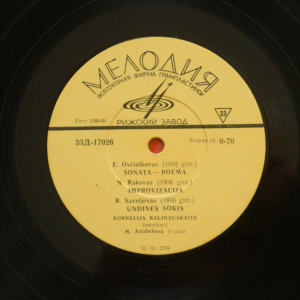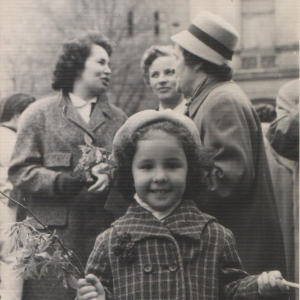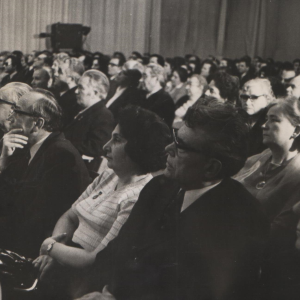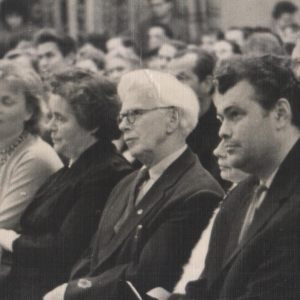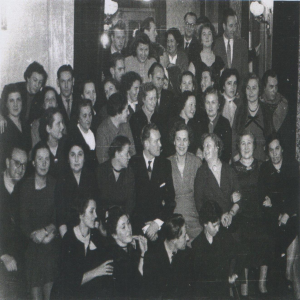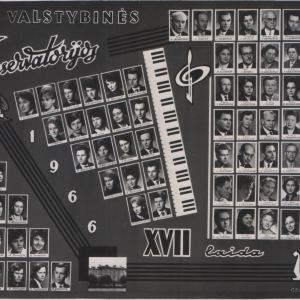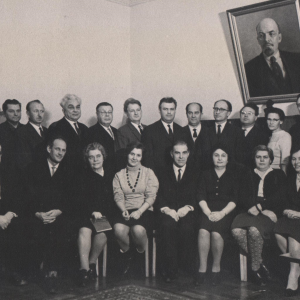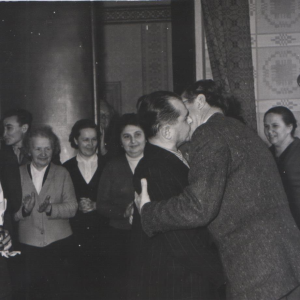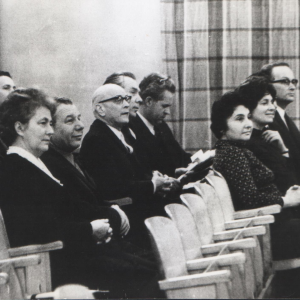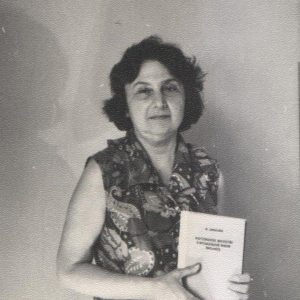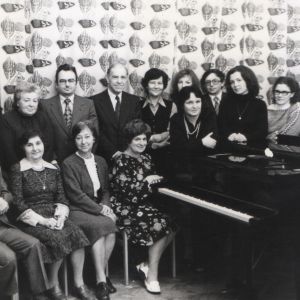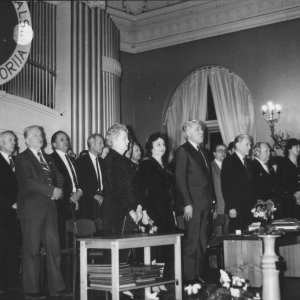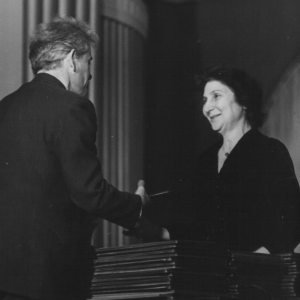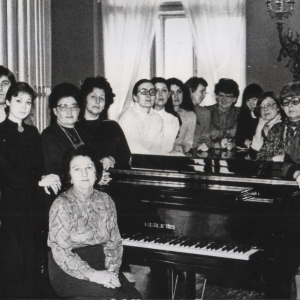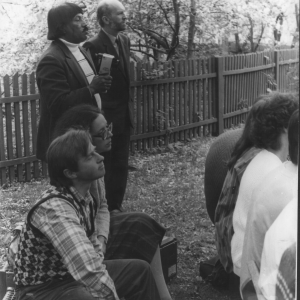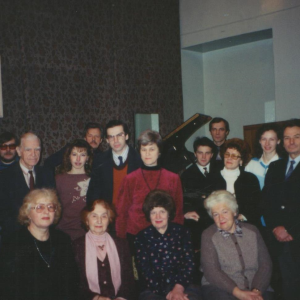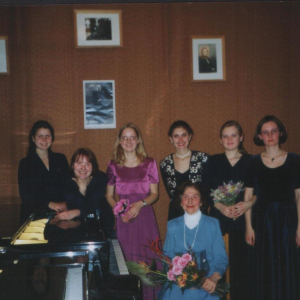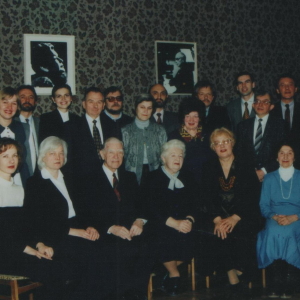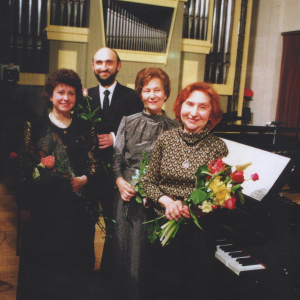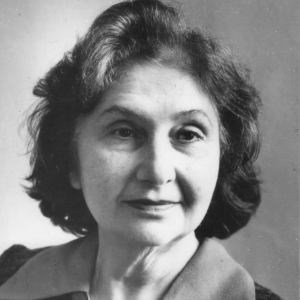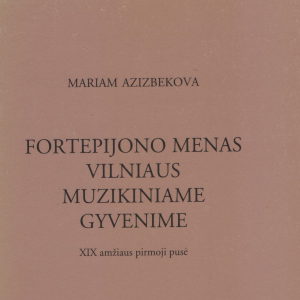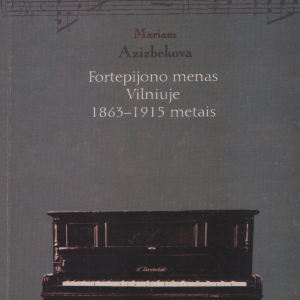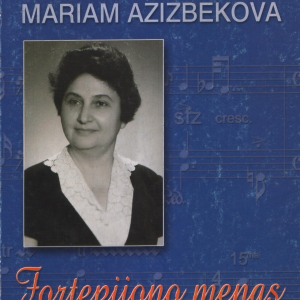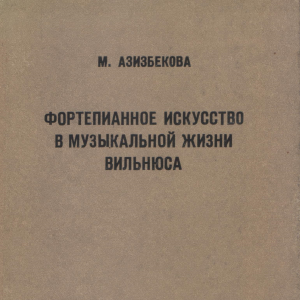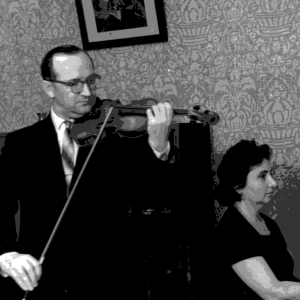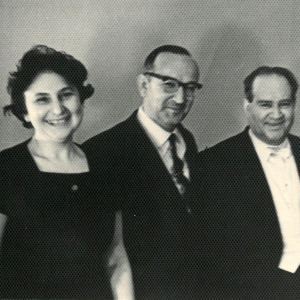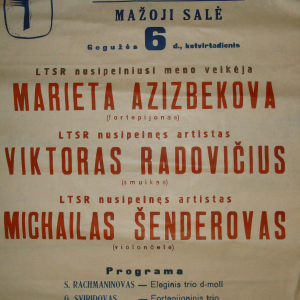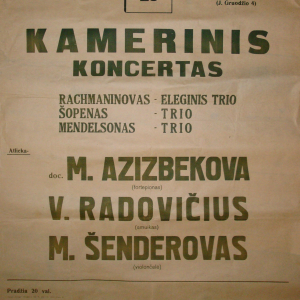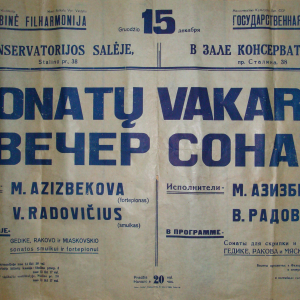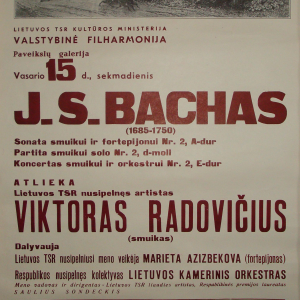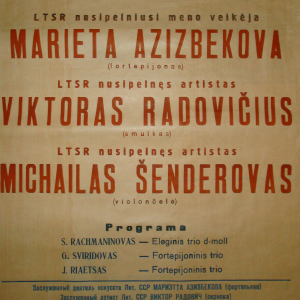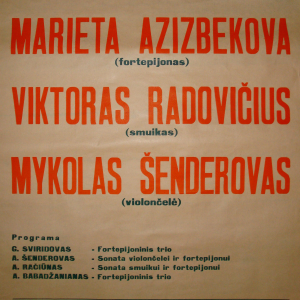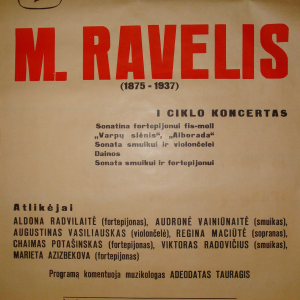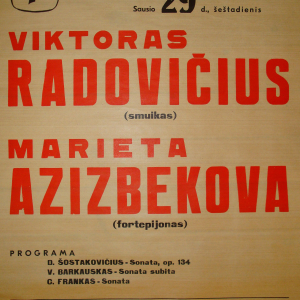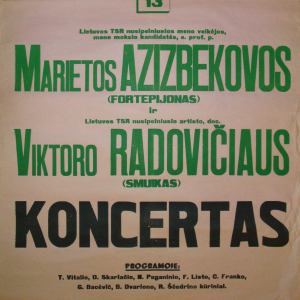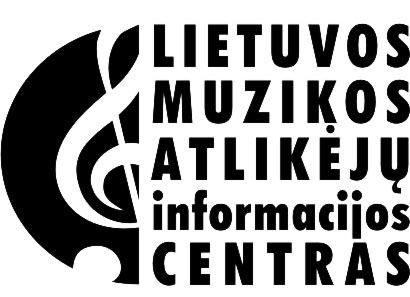
Mariam Azizbekova (1919-2012)

Mariam Azizbekova (born on 25 October 1919 in Rostov-on-Don (Russia) – died on 3 March 2012 in Vilnius) is a Lithuanian pianist, a pedagogue, a scientist, a Ph.D. (Humanities) and a cultural worker who left an indelible imprint in different fields of piano activities.
Mariam Azizbekova was born on 25 October 1919 in Rostov-on-Don into an Armenian emigrant family. Her parents liked music and laid the foundation for their daughter’s love of music. The city of Rostov-on-Don was famous for its intensive musical life, excellent music pedagogues. Hence, still at music school Mariam Azizbekova performed in concerts put on at the Philharmonic Society of the region and played Sergei Prokofiev Piano Concerto No. 1 Des-dur. She displayed her literary talent early in her life too.
In 1939, Mariam Azizbekova entered the Moscow Conservatory named after Pyotr Tchaikovky, the class of the worldwide renowned pianist Prof. Samuil Yevgenyevich Feinberg. While a student she performed in concerts quite a lot, compositions by romanticists, particularly those by Sergei Vasilyevich Rachmaninoff and Franz Liszt were her most favourite. In 1946, upon graduating from the Conservatory, she developed her skills in post graduate courses and in 1950, defended her doctoral thesis in humanities and art criticism (currently Ph.D. in Humanities) – Anatoly Konstantinovich Lyadov’s Piano Compositions and Some Problems of their Interpretation. In 1950, together with her husband Viktoras Radovičius, Mariam Azizbekova arrived in Vilnius.
Creative path
The most important years of the pianist’s creative biography were spent in Vilnius. Together with other artists who arrived in Lithuania, Mariam Azizbekova contributed significantly to the development of musical culture of Lithuania and education of professional pianists, and even became a founder of a distinctive piano school.
She performed in concerts as a soloist and with different ensembles. The pianist’s repertoire was extensive, including different styles of music – from the old classics to contemporary music. The repertoire of her youth included Mephisto Waltz by Franz Liszt, the Symphonic Etudes by Robert Schumann, Op. 13, Alexander Skriabin Piano Sonata No. 4, Fis- Dur, Op. 30, the twelve piano Études by Claude Debussy, together with a chamber orchestra she performed Johann Sebastian Bach Concerto No. 1 in D-minor; and together with a symphony orchestra she played Franz Liszt Piano Concerto No. 1 in Es-Dur, Sergei Prokofiev Piano Concerto No. 1, Des-dur. Mariam Azizbekova wanted not only the Lithuanian music but also lesser-known compositions by foreign composers to be performed in Lithuania. She was the first pianist to have performed musical compositions by Grażyna Bacewicz, Anatoly Konstantinovich Liadov, Franz Liszt, Olivier Messiaen, Igor Stravinsky, and many Lithuanian composers in Lithuania. She was especially fond of chamber music playing. Most often she played in concerts together with her husband violinist Viktoras Radovičius, and after his death she performed with the violinist Petras Kunca (Viktoras Radovičius’ pupil). She also cooperated with the clarinettist Algirdas Budrys, the violoncellist Michail Šenderov, the violinist Kornelija Kalinauskaitė, her pupil pianists Birutė Vainiūnaitė, Sergejus Okruško, Tatjana Radovič.
Pedagogical activity
Mariam Azizbekova, a pupil of the worldwide renowned pedagogue Samuil Feinberg, implemented her teacher’s pedagogical principles – respect for the composer’s text, the need to form the performer’s individual creative style, the development of professionalism, high artistic standards. She devoted her entire life to pedagogical work, contributed substantially to creating the Lithuanian piano school. Mariam Azizbekova worked at the Lithuanian Conservatory (currently the Academy of Music and Theatre) from 1950 to 2005. She worked at the Vilnius Ten-Year Music School (currently the Vilnius Mikalojus Konstantinas Čiurlionis Art Gymnasium) until 1975 and taught many of her pupils from the first form at school to the last year at the higher education institution.
Mariam Azizbekova started taking interest in theoretical and methodological issues in her youth and after she defended her thesis in the field of art criticism, being a scientist, she devoted much attention to the significance of the theory of music in developing the creative style of a performer. She was the first to start delivering lectures on the history of piano art, piano teaching methods, the history of piano methodology at the Lithuanian Academy of Music and Theatre. In 1954, the title of Associate Professor was conferred on her, and in 1976, she was awarded a pedagogic title of Professor. In 1969, an honorary tile of the Merited Artist of Lithuania was bestowed upon her.
Mariam Azizbekova’s methods of teaching pianists were aimed at professionalism of the pianist, achieving absolute mastery. Intensive studies were based on a detailed, comprehensive analysis of playing the composition. The pedagogue devoted great attention to the repertoire of her students, did her best to acquaint them with virtuosic compositions, creative work of the composers of the 20th century and Lithuanian music. Rightly feeling her students’ strong and weak points and showing respect for her pupil’s individuality, the Professor managed to choose the repertoire enabling the best features of her students to be revealed. Beginning with 1967 the tradition to organise concerts of the students of Mariam Azizbekova class in the Great Hall of the Lithuanian Academy of Music and Art continued for several decades.
A total of 85 student pianists who currently work in Lithuania and beyond its borders studied in the pedagogue’s class. Among her students were pianists Birutė Vainiūnaitė, Zecharia Plavin, Sergejus Okruško, Leonidas Dorfmanas, Ričardas Biveinis, the Professor’s last student grandson Viktoras Paukštelis; today all of them are outstanding performers who give many concerts in Lithuania and abroad.
The pianists and pedagogues that she trained are spread all over Lithuania and the world, they preserve and promote Mariam Azizbekova’ creative legacy and keep alive the traditions of training pianists that she established. Among musicians Mariam Azizbekova has always been appreciated as a specialist having an excellent knowledge of piano pedagogy. She was often invited to chair final examination commissions, take part in the work of competition selection boards.
The contemporaries remember Mariam Azizbekova as a colleague who radiated strength, concentration and energy, a teacher whose industriousness, thoroughness and accuracy, the desire to know and understand, comprehend various musical horizons surprised and inspired them.
According to Prof. Eugenijus Ignatonis, ‘the pianist was always concentrated at the utmost, dignified and aristocratic, a devoted ‘servant’ of the composer and ‘the lady’ of the concert who convincingly played her musical instrument, was an equal partner organically taking part in creating an integral musical image.’
Scientific activity
Professional experience accumulated and multi-year research into the history of piano art of Lithuania and Vilnius are revealed in two monographs Piano Art in Musical Life of Vilnius. The First Half of the 19th Century (1999) and Piano Art in Vilnius between 1863 and 1915 (1998), as well as in the autobiographical book Piano Art in my Life (1999). According to the author, the books were aimed at ‘showing the genesis of the originality of Lithuanian professional piano art, its links with other national schools of piano art, revealing accessibility and relevance of some problems related to performance and teaching’.
Mariam Azizbekova died on 2 March 2012 at the age of 92. She is buried in Antakalnis Cemetery in Vilnius.
Prepared by Aldona Juodelienė
Sources:
1. Drąsutienė Liucija. „Beveik trys dešimtmečiai“. Muzikos barai, 1989 spalio 6 d. Nr 9 (56)
2. Drąsutienė Liucija. „Dešimtmečiai Lietuvos muzikos baruose“. 7 meno dienos, 2008 spalio 23
3. Ignatonis Eugenijus. „Mariam Azizbekovai – 90“. Ignatonis Eugenijus. „Alma mater ir pianistai“, 2010, p. 44
4, Ignatonis Eugenijus. „Gėlės ir varpai fortepijonui“. 7 meno dienos, 1994 spalio 28
5. Karaška Arvydas. Azizbekova Mariam. Muzikos enciklopedija, Vilnius, 2000, T. 1, p. 97
6. Vitaitė Veronika. „Ilgiausių metų!“. Muzikos barai, 1994 Nr. 16 (159)
6. Vitaitė Veronika. „Pianistei, profesorei, daktarei Marietai Azizbekovai-75!“ Hortus musicus. Lietuvos muzikos akademijos laikraštis (2), 1994 m. gruodis
7. „Pianisto V. Paukštelio koncertas LMTA profesorei dr. Mariam Azizbekovai atminti“. Bernardinai.lt. Prieiga per internetą: http://www.bernardinai.lt/straipsnis/2012-05-16-pianisto-v-paukstelio-koncertas-lmta-profesorei-dr-mariam-azizbekovai-atminti/82295
Repertoire
P. Arma
„Sept transparences“ for Two Pianos
A. Babajanian
Trio for Piano, Violin and Cello
Sonata for Violin and Piano in B flat minor
J. S. Bach
Concerto in D minor for Piano and Orchestra
Sonata for Violin and Piano No. 2 in A major
G. Bacewicz
Little Triptych
V. Bagdonas
Poem for Violin and Piano
F. Bajoras
Dance No. 2
F. Bajoras
Waltz and Postscript
O. Balakauskas
Sonata for Violin and Piano op.22
V. Barkauskas
Sonata subita for Violin and Piano
„Dialogues“ for Violin and Piano
Trio for Piano, Violin and Cello
R. Biveinis
„Spiritus Astri“ for Violin and Two Pianos
A. Khachaturian
Trio for Piano, Violin and Clarinet
F. Chopin
Waltz in E minor
Polonaise in B flat major
C. Debussy
Twelve etudes
„White and Black“ for Two Pianos
B. Dvarionas
„Prie senos varpinės“
„Prelude“
H. Eder
Sonatina op. 34, No. 1, for Violin and Piano
S. Feinberg
„Tale“, op.33, No. 1
„Procession“, op.33, No. 2
Sonata op.46, for Violin and Piano
C. Franck
Sonata for Violin and Piano
Sonata in A major
J. D. Golland
Rondeau
G. F. Handel
Sonata for Violin and Piano
P. Hindemith
Sonata for Clarinet and Piano
E. Laumenskienė
Five Preludes
Capriccietto
V. Laurušas
Sonata for Cello and Piano
A. Liadov
Variations, op. 51
Barcarolle op. 44
„Idyllic“ op.25
Prelude op. 11, in B minor
Prelude op. 39, in F sharp minor
Etude in A flat major, op.5
Etude in F major, op.37
F. Liszt
Tarantella
Spanish Rhapsody
„Mephisto Waltz“
Sonata in B minor
Concerto in B flat minor
„Epitaph“
Duo (Sonata)
L. Lubovsky
Sonata for Violin and Piano
O. Messiaen
„Visions de l‘Amen“ for Two Pianos
V. Nechaev
Slow Waltz, op.9, No.2
N. Paganini
Cantabile for Violin and Piano
V. Paukštelis
Romantic sonata
Sonata for Violin and Piano
S. Prokofiev
Concerto in D major for Piano and Orchestra
Gavotte op.32, No.3
Dance op.32, No.1
Rigaudon op.12, No. 3
„Visions Fugitives“ op. 22
„Suggestion Diabolique“ op. 4
Sonata for Violin and Piano op.94, No. 2
A. Račiūnas
Sonata for Violin and Piano
M. Ravel
Sonata for Piano in F sharp minor
Sonata for Violin and Piano
N. Rosing-Schow
„E rigidis“ for Violin and Piano
D. Scarlatti
Three sonatas – D minor, F minor, D major
Sonata-pastoral
R. Schumann
Symphonic etudes
A. Scriabin
Sonata No. 4
R. Strauss
Sonata for Violin and Piano in E flat major, op.18
I. Stravinsky
„Histoire du Soldat“ (V. Radovičius, A. Budrys)
Italian suite for Violin and Piano
Duo Concertante for Violin and Piano
Divertisment for Violin and Piano
Lullaby and scherzo
G. Sviridov
Trio For Piano, Violin and Cello
R. Shchedrin
„In the Style of Albeniz“ for Violin and Piano
A. Šenderovas
Sonata for Cello and Piano
Cantus for Violin and Piano
D. Shostakovich
Sonata for Violin and Piano op.134
A. Venckus
Sonatina and Introduction and Allegro
T. Vitoli
Chaconne for Violin and Piano
